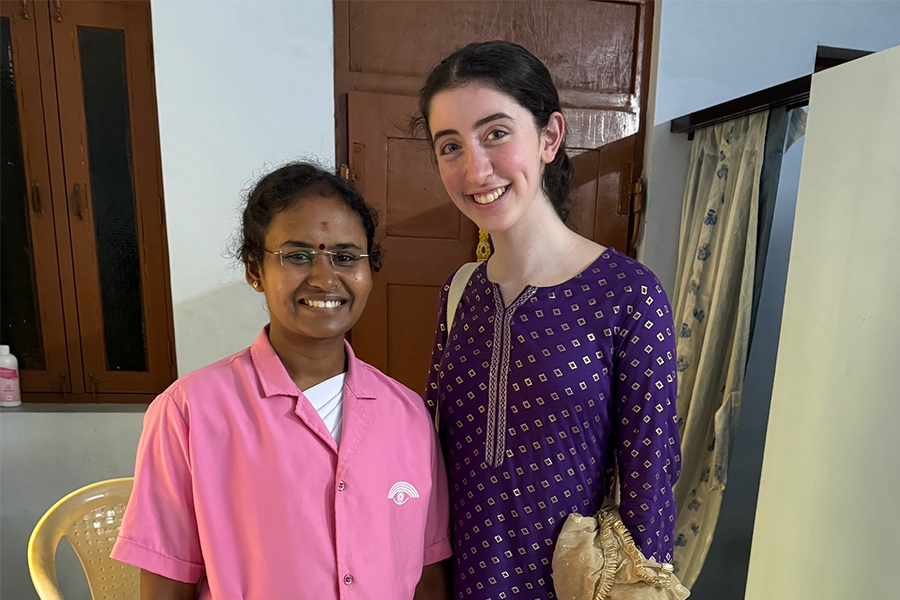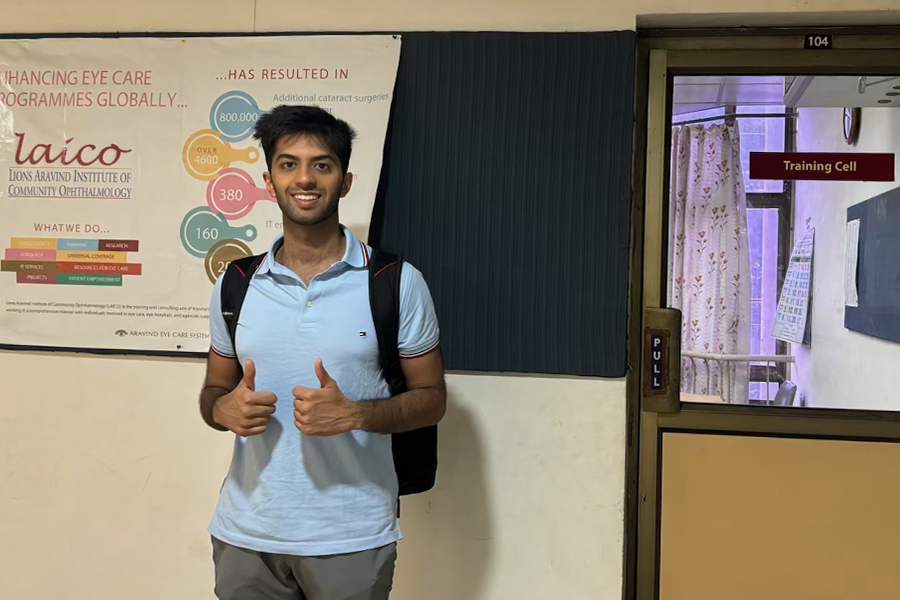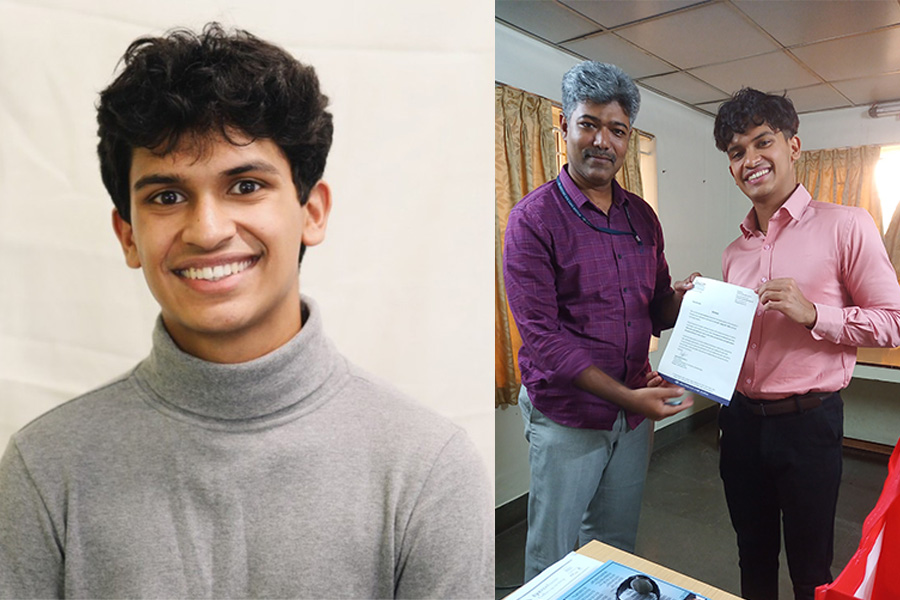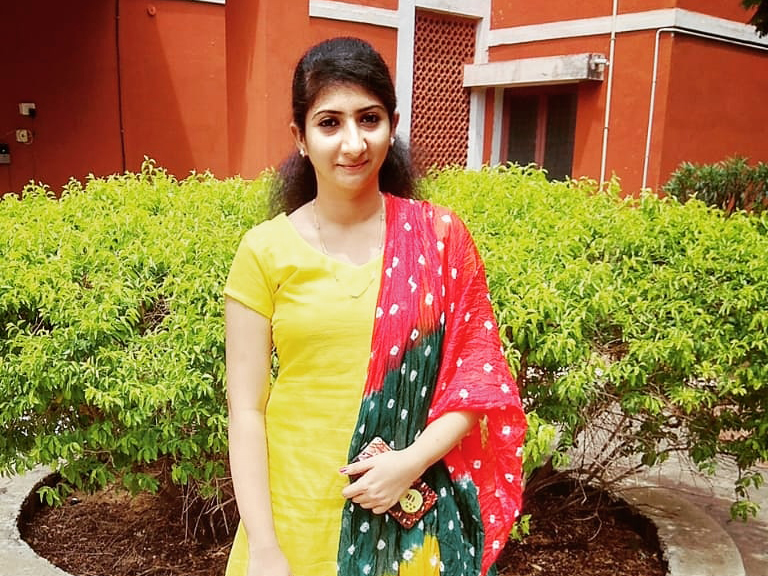Amanda Kossoff
Vision Centers: My Eye-Opening Ventures
Marakanum. Thirrukanur. Vandavasi. Bhuvanagiri. Parangipettai. Kurinjipadi. Kilpennathur. Gingee.
Such are the eight towns and villages I’ve had the opportunity to explore over the past week. What drew me here? Aravind’s remarkable Vision Centers (VCs): small, permanent facilities providing eye care services to semi-rural and rural communities.
Part 1: Before
During my first month at Aravind, my primary focus was streamlining consultations for vitreoretinal surgery patients in the retina clinic, and piloting clinical manpower shifts in the Lasik OT. But in my spare time, I found myself frequently visiting the non-paying section of the hospital. One particular day, I struck up a conversation with two coordinators, Gayathri and Bhavika. I was curious about their roles, the challenges they faced, and often sought their help in translating conversations with patients about their eyes and lives. They graciously invited me to join their daily tea breaks in the hospital canteen, and it was through the conversations that unfolded that I came to realize the profound impact of the vision centers.
The next week, I was sitting beside my mentor, interrupting her busy schedule with my questions as usual. To my surprise, she invited me to join her at her next meeting! Near the end, Mr. Thulasiraj Ravilla, Director of Operations of Aravind Eye Care System, Executive Director of LAICO (Aravind’s consulting branch), and one of the founding members of Aravind chimed in. He emphasized the need to improve comprehensive care through piloted changes at the vision centers, highlighting variations in compliance to investigations and teleconsultation presentations. That evening, feeling both nervous and determined, I emailed Mr. Thulasiraj expressing my desire to spearhead such projects. Mr. Thulasiraj was generous in meeting with me and entertaining all of my questions: and before I knew it I was scheduled to visit eight vision centers across the state of Tamil Nadu. Armed with pen and paper and a head full of wonder, my aim was to pinpoint operational bottlenecks and inefficiencies in delivering comprehensive care to those who may need it most.
As the sun was rising, I piled into a bus beside nurses trained for checking VC stock, eyeglasses, and instruments, along with Gayathri and Bhavika. The nurses handed me bright yellow flowers they had picked from a nearby bush and Gayathri began braiding my hair: small metaphors symbolizing the endless kindness and altruism I’ve been dealt by all of my new friends here. My mind a bit foggy from a 4:30 am call tailored to a California time zone, and feeling limp from the extreme heat, I picked a window seat to rest during our journey.
However, just as the bus began to move, the nurses rushed to the front, conversed with the bus driver (the only word I could understand out of the lively exchange was “Bluetooth”), and all of a sudden the beat of “Kaavaalaa” was thumping on full blast. One month in, I was already familiar with many of the popular Tamil songs (“Naa Ready,” “Achacho,” and “Hey Vaada Vaada” being some of my favorites). What I didn’t expect was the nurses pulling me out of my seat and exclaiming “Stand dance! Stand dance!” We danced and jumped out of our seats for the next hour as we weaved through long stretches of grassland with interspersed cows, motorcycle drivers with cell phones sandwiched between their ears and shoulders, lively towns, and banana carts. Our stop for delicious vadas, idlis, sambar, and kamarkattu conveniently re-energized us for our tasks ahead.
Part 2: During
The vision center was carved snugly into the side of the road, which I entered after removing my sandals. I was immediately taken by the busy, colorful place: the bright blue painted interior, lime green and neon orange draped sarees, pink optometrist jackets, and white dhotis blurred into each other as my eyes jumped from one spot to the next. Deciding to focus on one patient at a time, I could deduce a flow.
First, a patient registers after providing their mobile number, village, and other critical information, which is entered into their comprehensive EMR. The patient receives a unique patient ID and undergoes a blood pressure check while providing systemic history information (certain patients also undergo blood sugar testing at this step). Patients’ eyes are next examined via a flashlight and a slit lamp. Some patients then have a foreign body carefully removed, which could range from dust to metal to an insect wing. After refraction, an IOP check, and dilation comes my favorite part: fundus camera imaging! Equipped with an AI-enabled smartphone-based non-mydriatic fundus camera, all VCs can detect diabetic retinopathy and age-related macular degeneration, two leading causes of blindness in India and the world… in less than two minutes. Finally, patients are presented to doctors stationed at the tertiary base hospital through telemedicine, receive tailored consultations, and continue on with their day.
Upon scanning the EMR, most patients had come with minor injuries, foreign bodies, or eye infections: all of which could be addressed at the vision center itself. In fact, about 90% of all patients’ problems can be solved at the VC alone, with 10% being referred to the base hospital to see specialty clinics including cataract, pediatric, retina, cornea, glaucoma, orbit, neuro-ophthalmology, and uvea. Eye drops, prescription eyeglasses, and blood sugar tests are also provided at these centers. What’s more, the entire operation is run by two diligent, skilled mid-level ophthalmic personnel not much older than I! The total number of outpatients is around 60 per center on the busier days, but lesser on Fridays. This is likely because, in this part of the world, it is interestingly accepted that if you begin something on a Friday, it will prolong itself… eye complaints included!
Expectedly, though my task was to scribble down observations about workflow and collect teleconsultation data, during slower times I tried to understand more about the lives and experiences of those around me (through largely broken English). One patient walked hunched over, supported by a stick, with his torso nearly parallel to the ground. His right leg, thin as a twig and angling out, appeared ready to snap with each step. A middle-aged farmer from a nearby village, he couldn’t go near his cows for two years out of fear that his clearer eye would be hit by their tail. His AI report from fundus imaging identified probable diabetic retinopathy, and he was referred to the base hospital to see the retina clinic. My eyes were drawn to another patient who entered and navigated to the refraction area using only his hands: one hand angled towards his destination and the other bending back, pulling his body as his legs dragged limply behind. Another patient caregiver explained in a scratchy voice while looking deep into my eyes that her husband could no longer see potholes or open manholes on the road (accounting for 5% of the deaths on roads in India), riddling her with anxiety each day.
I next saw an older woman carrying a pained expression waiting for a refraction examination. She wore a red saree with draped orange and white cloths and golden bangles. Her cheeks sunk deeply into her skull, her index, middle, and ring fingers were misshapen into L shapes, and she was missing many of her toes. After ten minutes of back-and-forth translation and nearly all of my brainpower to piece together each sentence, I began to understand her story. She had an artificial eye implanted ten years ago and had lost it two years prior when she was violently cast out of her family’s home. She now lives alone outside of a temple, reliant on their occasional food offerings, and devoid of any caregivers.
I softened as I watched her cry. But, to my surprise, Gayathri hardened. I became confused and concerned as she raised her voice, and though I couldn’t discern any words, it seemed as if she was scolding the patient. An adjacent coordinator whispered to me, “Patient is hopeless. She give hope.” After further inquiring, Gayathri’s sharp words were necessary to ensure that the infection from her left eye wouldn’t spread to the right through her tears.
“What happens now?” I blurted out to the coordinator.
“She refer to base hospital,” the coordinator replied.
My words tumbled out uncontrollably: “Does she know where the hospital is located? Does she know which buses to take? How can she have surgery without an attender?”
After looking at me for a moment, she assured me she would inform her manager. I continued, asking how we might reach the patient tomorrow, if we could provide transportation to the base hospital through the closeby outreach camp on Sunday, if the patient knew how and when she could reach the camp. The coordinator collected her patient details and simply said “I will inform.”
Part 3: After
We ended the day sitting cross-legged in a circle, shoveling chicken biryani into our mouths out of a newspaper. As I squished each clump of rice together and carefully pushed it into my mouth using my thumb, my mind raced. I thought about the seemingly indomitable barriers to healthcare access, in a rural town in South India and also halfway across the world in Philadelphia where I live. Whether it be financial, geographic, informational, familial, or temporal: the list goes on. I thought about Gayathri and the balancing act between compassion and practicality that healthcare professionals must constantly navigate when interacting with patients. And of course, I thought about the patient in the red saree, her wavering resilience and utter vulnerability.
When I, maybe naively, asked Mr. Thulasiraj why Aravind doesn’t provide transportation to the base hospital from vision centers, he thoughtfully explained that the mission of Aravind is not only to eliminate logistical barriers such as cost and access to information. They aim to create a lasting health behavior change in each village: focusing on systemic approaches to empowering the community. That way, Aravind encourages uptake of eye care services rather than exacerbating patient’s dependence on external support.
India has the highest number of people in the world living with visual impairment or blindness, yet 92.9% of blindness is completely preventable. The work of Aravind Eye Care System is undoubtedly astounding, its impact indescribable. Aravind’s systemic approach to community empowerment demonstrates how deeply the organization considers the long-lasting consequences of their services. But if my Vision Center experiences taught me anything, it is that human suffering endures. I aim to dedicate my life toward lessening that wherever I can.
Oh, and the lady in the red saree was seen in the orbit clinic for surgery at the base hospital the following day. The coordinator team reached her daughter through a neighbor, who accompanied her in restoring her sight.










